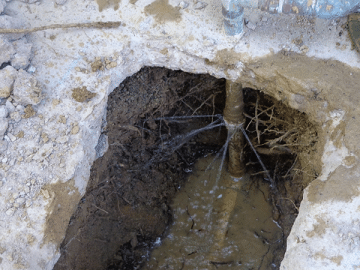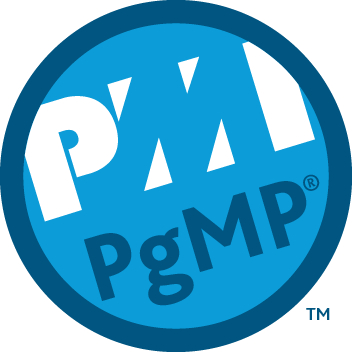Causes of Water Service Line Breaks
The challenge with underground water supply infrastructure, is once installed, piping is out of sight, and therefore, like so many other things we do not see in our homes, is often neglected. A 2012 to 2018 study conducted by Utah State University (USU) found 16 percent of all underground water supply piping exceeded their useful lives.  The 2017 United States Infrastructure report card for drinking water infrastructure sat at a “D”, with surveys from the American Water Works Association (AWWA) indicating water purveyors top concern continues to be replacement of aging water supply piping. Not surprising, underground water pipe breaks are up 27 percent over that same six-year period, which translates to more than 23,800 pipe failures that required repair or replacement. More concerning are water main breaks associated with cast iron piping. Currently, 41 percent of water service infrastructure in the United States is constructed from cast iron (CI) pipe with the vast majority more than 50 years old, resulting in an alarming break rate of 40%.
The 2017 United States Infrastructure report card for drinking water infrastructure sat at a “D”, with surveys from the American Water Works Association (AWWA) indicating water purveyors top concern continues to be replacement of aging water supply piping. Not surprising, underground water pipe breaks are up 27 percent over that same six-year period, which translates to more than 23,800 pipe failures that required repair or replacement. More concerning are water main breaks associated with cast iron piping. Currently, 41 percent of water service infrastructure in the United States is constructed from cast iron (CI) pipe with the vast majority more than 50 years old, resulting in an alarming break rate of 40%.
Highly corrosive soils accelerate pipe degradation of metal and ferrous pipe materials, particularly cast-iron pipe, which experiences 20 times more pipe breaks in corrosive soil conditions than in non-corrosive conditions. Three quarters of all water utilities report at least one or more locations with corrosive soil conditions within their service area. Most utilities operating underground piping in such soils implement some form of corrosion protection but with limited success.
The Kansas City region lies within a highly corrosive soil geology. Homes serviced by steel and cast-iron water service mains will require replacement at an accelerated rate over the coming years. Delaying proactive investment in home water service pipe replacement will expose homeowners to health hazards, increased disruptions to water service, and very expensive emergency repairs or replacement. The bigger health risk exists when an individual homeowner does not recognize their homes drinking water service pipe has a leak or is otherwise defective.  A homes water service line is the supply pipe connecting the home plumbing system to the public water main or private well. The pipe is installed underground through a properties yard and therefore is unseen. The danger in underground water infrastructure are crack(s) or hole(s) may go unnoticed until the fractures become large enough to be reflected in an unusually high-water bill. However, the water service pipe may have been comprised for some period of time, allowing disease causing pathogens or chemicals to enter the homes water supply. Additionally, local public health departments, like the homeowner may not be aware of the hazard, and therefore do not issue any warning to occupants of the pollution or contamination in their drinking water.
A homes water service line is the supply pipe connecting the home plumbing system to the public water main or private well. The pipe is installed underground through a properties yard and therefore is unseen. The danger in underground water infrastructure are crack(s) or hole(s) may go unnoticed until the fractures become large enough to be reflected in an unusually high-water bill. However, the water service pipe may have been comprised for some period of time, allowing disease causing pathogens or chemicals to enter the homes water supply. Additionally, local public health departments, like the homeowner may not be aware of the hazard, and therefore do not issue any warning to occupants of the pollution or contamination in their drinking water.
Health Hazards of a Compromised Water Service Pipe
The CDC attributes aging infrastructure as one critical factor to waterborne disease transmission. When water supply mains break, leak, or otherwise fail, especially when combined with a loss of pressure, pollutants and contaminants may 
How To Get a Water Quality Report or Request Testing
Property owners may contact the local water supplier and request an annual water quality report, sometimes referred to as a consumer confidence report. This report lists contaminants that have been detected in the water and how the measured pollutant levels compare to EPA water quality standards. Property owners may elect to collect water samples and submit to the local public health department (LPHD) for testing. For homes serviced by a private water well, this is very common. Water testing through an LPHD is generally limited to coliform bacteria detection, omitting most other waterborne pathogens and heavy metals. A more comprehensive battery of tests can be achieved through a private lab in which a homeowner may request several biological and chemical tests.
Five Signs of a Broken Home Water Service Line
The USU study found as much as 20 to 30 percent of all supplied drinking water is lost due to leaks and breaks. The result is a loss of an increasingly scarce commodity, but more immediate, a significant economic impact to the property owner or occupant. Below are indicators of a potentially defective water supply pipe:
- A wet location in the yard with unusually green and abundant vegetative growth, or areas that continuously remain damp or soggy for an extended period, especially during dry seasons may indicate a deteriorated underground water pipe leaking into the ground.
- Generally, the only time the sound of rushing water can be heard is when water is drawn from the supply pipe. If all home water fixtures are turned off, and a rumbling or hissing sound can be heard where the water service pipe enters the home, this is a strong indicator that the service line is broken and running water into the ground.
- Not all leaks are accompanied by a noticeable drop in either water flow or pressure, but when experienced, sudden drops in water flow or pressure are reliable indicators of a compromised pipe. There are other causes to water flow and pressure problems that should be ruled out, but taken together in combination with any of the other indicators listed here increases the probability that the home’s water service pipe needs replacement.
- Red or brown water mineral stains may indicate either deterioration of ferrous and cast-iron water pipes from oxidized iron or rusts, or worse yet, soil infiltration into the plumbing through cracks, holes or other pipe defects.
- Finally, sudden or large increases of water usage reflected in the monthly water bill is one of the strongest and best indicators of a ruptured underground water pipe.
What is the Best Replacement Option for Underground Water Pipes?
The overall best replacement option offering the greatest protection and longevity for homeowners, involves replacing aged steel and cast-iron water service pipes with either copper or polyethylene pipe, combined with a backflow preventer. Plastic pipe has the lowest failure rate among the various types of pipe materials. Plastic does not corrode and offers some structural flexibility. A high performing backflow prevention device or assembly can prevent both pollution and contamination of drinking water. Best practices would locate a backflow preventer on the home’s main water supply pipe at the point of entry into the building. When replacing existing metal water pipes with plastic, consideration of the home’s electrical system must be made. Specifically, if the existing metal water service pipe is used as part of the home’s electrical system ground, the new plastic pipe will negate that function and require that section of system grounding be relocated. Generally, this is done by installing a second grounding electrode “ground rod” into the earth outside of the home and extending the grounding electrode conductor (GEC) from the existing ground to the second.
Home Performance Water Service Pipe Installation in Kansas City
Have a leak in your water supply pipe? Received a contaminated water test? Want to replace your home’s water service pipe with a long-term solution? Consider hiring a full-service plumbing professional with expert knowledge to properly excavate, install, and test water service pipes. Careful selection of a master level plumber with real world underground experience can protect your family’s health and save tens of thousands of dollars in future rework.
At Home Performance Group, we continue to invest in advanced plumbing training so we can correctly specify, recommend, replace and install water supply systems. We have performed numerous projects for our clients.
If you are interested in a no-cost in-home consultation, schedule with a Solutions Advisor today.

Article by Larry L. Motley Jr., 17 January 2022
Larry is a graduate of both Wentworth Military Academy and Missouri Western State University earning a double bachelor’s degree in Economics and Finance. Additionally, he maintains six professional tradesman licenses in two states and advanced credentialing in green technology, project and program management, and process improvement. Larry is a three-time combat veteran having served in Operation Iraqi Freedom, Operation New Dawn, and Operation Inherent Resolve. He continues to serve through a value-based building science company focused on providing clients the best design, highest quality installation, and most honest repair services in the community.


Featured Service Areas:
| Missouri | Kansas | ||||
|---|---|---|---|---|---|
|
Belton Blue Springs Cameron Excelsior Springs Gladstone Holt |
Independence Kansas City Kearney Lathrop Lawson Lee's Summit |
Liberty North Kansas City Parkville Platte City Plattsburg Polo |
Raytown Riverside Smithville Sugar Creek Weston |
Kansas City Lansing Leavenworth Leawood Lenexa |
Merriam Mission Mission Hills Praire Village Shawnee |






















